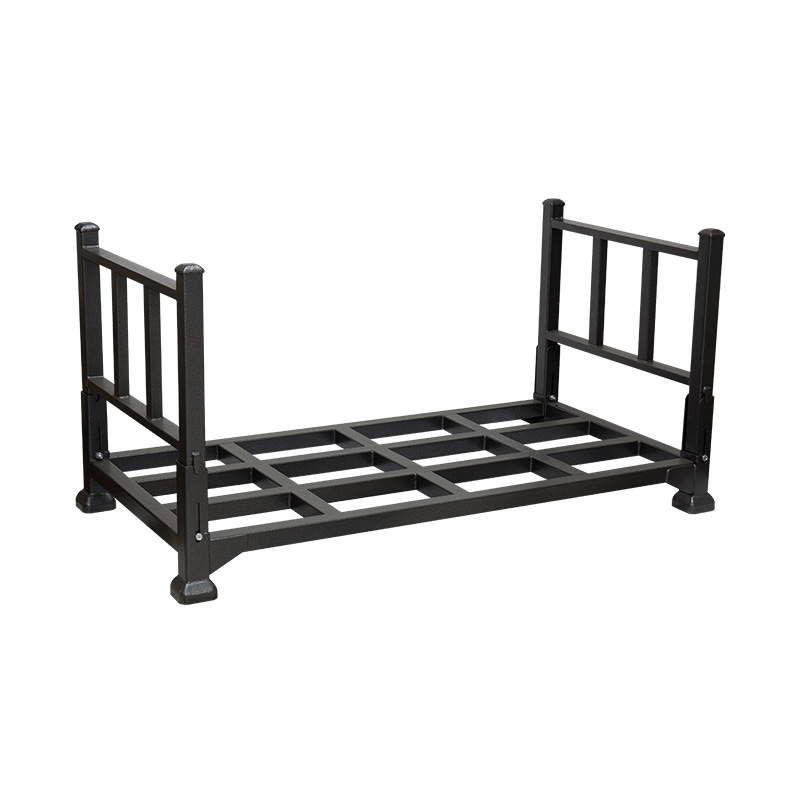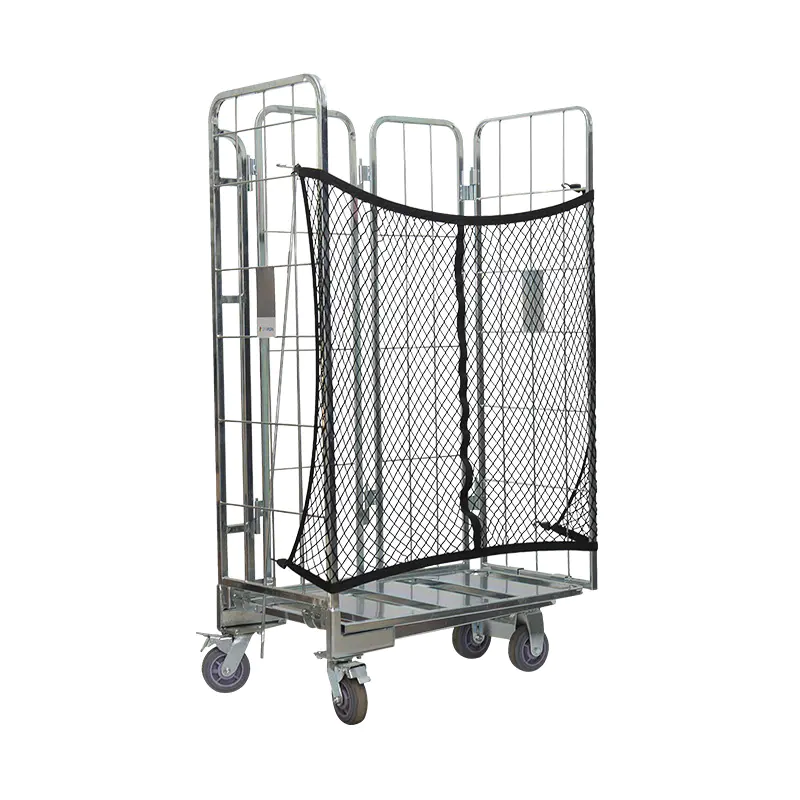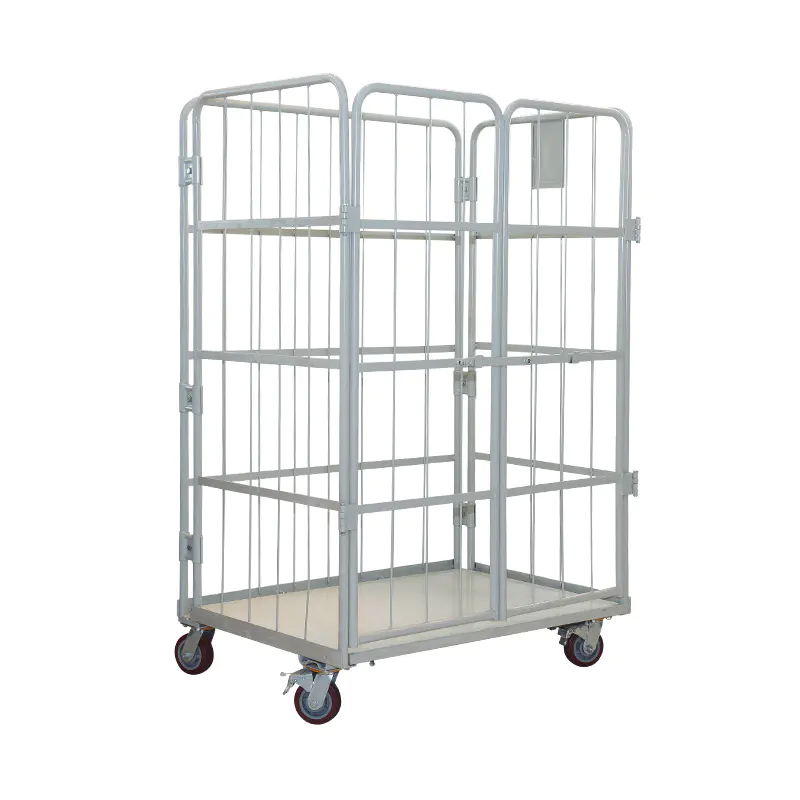Don't hesitate to send a message
Web Menu
Product Search
Exit Menu
What Are the Key Components and Structural Design of a U-Shaped Container Cage?
The efficiency of modern warehouse operations hinges on the strategic use of material handling equipment. Among the most versatile and widely adopted solutions is the u-shaped warehouse storage rolling container cage trolley. Its design, which may appear simple at first glance, is the result of careful engineering aimed at optimizing storage, transportation, and workflow.
Introduction to the U-Shaped Design Philosophy
The defining characteristic of the u-shaped warehouse storage rolling container cage trolley is its three-sided containment structure, which is open on one full side. This is not merely a stylistic choice but a fundamental design feature that addresses specific operational challenges. Unlike four-sided cages, the U-shaped configuration offers unimpeded access to the stored goods. This design is instrumental in accelerating both loading and unloading processes, as personnel are not required to reach over high side walls or maneuver items through a narrow access gate. The open side allows for direct, frontal access to the entire contents of the trolley, which is particularly beneficial for activities like order picking, cross-docking, and transporting irregularly shaped items that might protrude. The structural integrity of the unit is maintained through a robust framework that compensates for the missing fourth wall, ensuring that the u-shaped warehouse storage rolling container cage trolley does not sacrifice strength for accessibility. This balance between open access and structural stability is the core of its design philosophy, making it a preferred choice for dynamic warehouse environments where speed and efficiency are paramount.
Key Components of a U-Shaped Rolling Container Cage
A u-shaped warehouse storage rolling container cage trolley is a system composed of several integrated components, each playing a critical role in its overall function, durability, and safety. A thorough understanding of these parts is essential for evaluating product quality and suitability for specific applications.
The Structural Frame: Base, Uprights, and Top Frame
The structural frame is the skeleton of the trolley, bearing the entire load and providing its fundamental shape. It is typically constructed from hollow steel sections, which offer an excellent strength-to-weight ratio.
The Base Frame is arguably the most critical load-bearing component. It is designed to support the immense weight of the contents and transfer that load to the castors. High-quality units often feature a heavy-duty base frame constructed from thick-walled steel tube, often rectangular or square in profile for increased rigidity. The configuration of the base members is designed to prevent sagging and to provide a stable platform for pallets or direct loading. The design of the base directly influences the load capacity and long-term structural health of the trolley.
The Uprights are the vertical posts that form the corners and sides of the cage. They are securely welded to the base frame, creating a solid foundation for the mesh panels. The uprights must resist bending and buckling forces, especially when the trolley is fully loaded and moved across uneven flooring. In many designs, the uprights are reinforced at the points of greatest stress.
The Top Frame connects the uprights at the top of the cage, completing the three-dimensional structure. It serves to tie the entire assembly together, preventing the uprights from splaying outward under load. The top frame often features a lipped or rolled edge, which enhances its stiffness and provides a safer, smoother surface for handling. Together, the base, uprights, and top frame form a cohesive, rigid structure that defines the physical dimensions and ultimate strength of the u-shaped warehouse storage rolling container cage trolley.
The Containment Panels: Mesh and Welding
The containment panels are what give the cage its secure storage characteristics. These panels are affixed to the structural frame and are responsible for containing the load.
The Mesh Panels are typically made from steel wire that is welded into a grid pattern. The gauge, or thickness, of this wire is a primary determinant of the panel’s strength and resistance to impact. A heavier gauge wire is used for applications involving sharp, heavy, or abrasive items. The size of the mesh openings is another critical consideration; a smaller mesh provides better containment for small items, while a larger mesh reduces the overall weight of the trolley and improves visibility of the contents. The mesh is attached to the frame through welding, and the quality of these welds is a key indicator of overall manufacturing quality. Continuous, even welds without splatter or porosity ensure a long service life and prevent failure at the connection points.
The Rear and Side Panels are fully enclosed to provide security and prevent items from falling out. The rear panel is a critical element for the structural bracing of the U-shaped design, acting as a shear panel to resist lateral forces. The design of the u-shaped warehouse storage rolling container cage trolley means that the two side panels are also fully enclosed, providing protection on three sides while leaving the front completely open for access.
The Mobility System: Castors and Mounting
Mobility is what transforms a static container into a dynamic trolley. The choice and configuration of the castors directly impact the maneuverability, load capacity, and floor-friendliness of the unit.
Castor Types and Selection are vital for functionality. Castors are chosen based on two main attributes: their ability to swivel and their braking mechanism. A typical configuration for a u-shaped warehouse storage rolling container cage trolley involves two rigid (fixed) castors and two swivel castors. This setup provides a balance between stability and maneuverability, allowing the trolley to be easily steered while maintaining a predictable path. The choice of wheel material is also crucial. Common options include:
- Nylon: Hard-wearing and suitable for most indoor floors.
- Polyurethane: Offers a superior balance of load capacity, floor protection, and quiet operation.
- Rubber: Provides excellent shock absorption and traction but may mark certain floors.
The Mounting System refers to how the castors are attached to the base frame. For heavy-duty applications, castors are typically bolted to a reinforced section of the base using a top plate mounting system. This method provides a much stronger connection than simpler stem-mounted alternatives. The mounting points are often reinforced with additional plating to distribute the immense forces encountered during movement, especially over thresholds or minor imperfections in the floor. The inclusion of brakes is a critical safety feature. Brakes can be fitted to two or more castors, allowing the u-shaped warehouse storage rolling container cage trolley to be securely parked during loading and unloading to prevent accidental movement.
Additional Features and Accessories
Beyond the core components, several additional features can enhance the functionality and safety of a u-shaped warehouse storage rolling container cage trolley.
Identification and Labeling Systems are essential for inventory management. Many trolleys are equipped with a label holder, a simple plastic sleeve attached to the frame, which allows for easy identification of contents, destination, or order number using a printed card or barcode. This feature integrates the trolley into wider warehouse management systems.
Safety and Handling Features include elements like a tow bar, which can be permanently affixed or fold-away, allowing the trolley to be pulled by a tugger or forklift truck for moving heavier loads over longer distances. The top edge of the frame is often designed with a smooth, rolled finish to protect both the goods and the hands of the operators. Furthermore, the open-front design is inherently safer for staff, as it eliminates the need to reach over high sides, reducing the risk of musculoskeletal injuries.
In-Depth Analysis of the Structural Design
The structural design of the u-shaped warehouse storage rolling container cage trolley is a deliberate response to the functional requirements of modern logistics. Every aspect of its geometry and construction is optimized for performance.
Load Distribution and Stress Management
The primary engineering challenge is to manage the significant stresses imposed by a heavy load, both in a static state and during dynamic movement. The design focuses on effectively distributing these forces throughout the structure. The base frame is engineered as the primary load-bearing platform. The longitudinal and transverse members of the base are positioned to directly support the weight, channeling it downward through the castors. The U-shaped configuration places a unique stress on the open front; to counteract the tendency for the front of the base to splay, the base frame is often reinforced at the corners. The uprights are subjected to compressive forces, but also to lateral forces when the trolley is turned or stops abruptly. The fully enclosed mesh panels, particularly on the rear, act as diaphragms that transfer these lateral loads across the structure, preventing racking and deformation. This integrated system ensures that the u-shaped warehouse storage rolling container cage trolley maintains its geometry and strength throughout its operational life, a key consideration for durable warehouse equipment.
Stability and Maneuverability Considerations
The stability of the trolley is a direct function of its footprint, its center of gravity, and the placement of its castors. A wider base and a lower overall height contribute to greater stability, preventing the unit from tipping during cornering or if the load shifts. The placement of the castors is also critical; positioning them near the corners of the base frame maximizes the stability triangle. The open-front design, while excellent for access, can theoretically make the trolley more susceptible to forward tipping if a load is improperly placed. To mitigate this, the design often incorporates a low-profile base that encourages a lower center of gravity for the load. Furthermore, the rear panel acts as a counterbalance of sorts, and the rigid castors help to maintain a straight line, reducing the sideways forces that can lead to instability. The overall design achieves a careful compromise, providing the maneuverability required for navigating tight warehouse aisles while ensuring the stability needed for safe operation.
Material Selection and Corrosion Resistance
The choice of materials directly impacts the durability, weight, and suitability of the u-shaped warehouse storage rolling container cage trolley for different environments. The vast majority of frames and mesh panels are constructed from steel.
Finishes and Coatings are applied to protect the steel from corrosion, which can significantly weaken the structure over time. The standard and most cost-effective finish is a powder coating. This process involves applying a dry electrostatically charged powder to the metal, which is then cured under heat to form a hard, durable, and uniform layer. Powder coating is available in a variety of colors and provides excellent resistance to chipping, scratching, and chemicals commonly found in warehouses. For environments with high humidity or where the trolleys may be used for outdoor storage, a more robust finish is required. In these cases, a galvanized finish is the preferred option. Galvanization involves coating the steel in a layer of zinc, which provides superior sacrificial protection against rust. This can be done through hot-dip galvanizing, which creates a thick, bonded coating, ideal for harsh conditions. The selection of the appropriate finish is a critical factor in the total cost of ownership and the longevity of the equipment.
Comparative Analysis of Design Variations
While the core U-shaped design is consistent, variations exist to cater to specific operational needs. Understanding these variations allows buyers to select the most appropriate model.
Standard U-Shaped vs. Nesting Designs
One of the most significant design variations relates to how the trolleys are stored when empty. Empty trolleys can consume a considerable amount of valuable floor space.
Standard designs are built for maximum strength and are not intended to be compacted. Their rigid structure means that when empty, they occupy the same footprint as when they are full. This is suitable for operations where trolleys are in constant use and empty storage is not a primary concern.
Nesting designs, however, are engineered to allow empty trolleys to be pushed partially inside one another, reducing the footprint they occupy by up to 50-60%. This is achieved through a carefully calculated taper in the design of the frame and panels. While this feature is highly beneficial for space-saving storage, it can sometimes involve slight compromises in absolute load capacity or the use of a slightly lighter gauge material compared to a non-nesting equivalent of the same size. The choice between standard and nesting models is a direct trade-off between ultimate strength and storage efficiency.
The following table summarizes the key considerations for this design variation:
| Feature | Standard U-Shaped Trolley | Nesting U-Shaped Trolley |
|---|---|---|
| Empty Storage Footprint | Large (full footprint) | Small (reduced by 50-60%) |
| Structural Rigidity | Typically higher due to fixed geometry | Slightly less rigid due to nesting mechanism |
| Ideal Use Case | High-load, constant-use applications | Operations with fluctuating demand and limited space |
| Maneuverability | Consistent | May be slightly affected when nested |
| Cost Consideration | Often more cost-effective for heavy-duty specs | May carry a premium for the nesting feature |
Customization and Application-Specific Modifications
The standard u-shaped warehouse storage rolling container cage trolley can be modified to suit specialized tasks. These customizable cage trolley solutions address unique logistical challenges. For example, a common modification is the addition of a drop-down or removable gate on the front. This transforms the trolley into a fully enclosed four-sided container for transporting small or high-value items that require complete security, while still offering the access benefits of the U-shape when the gate is open. Other modifications include reinforced bases for exceptionally heavy loads, specialized mesh patterns for containing specific item types, or the integration of shelves or dividers to create organized compartments within the main volume. For industries requiring strict hygiene, such as food and pharmaceuticals, trolleys can be manufactured from stainless steel with fully welded and polished seams to prevent bacterial growth and facilitate easy cleaning. These application-specific designs highlight the versatility of the core U-shaped concept.
-
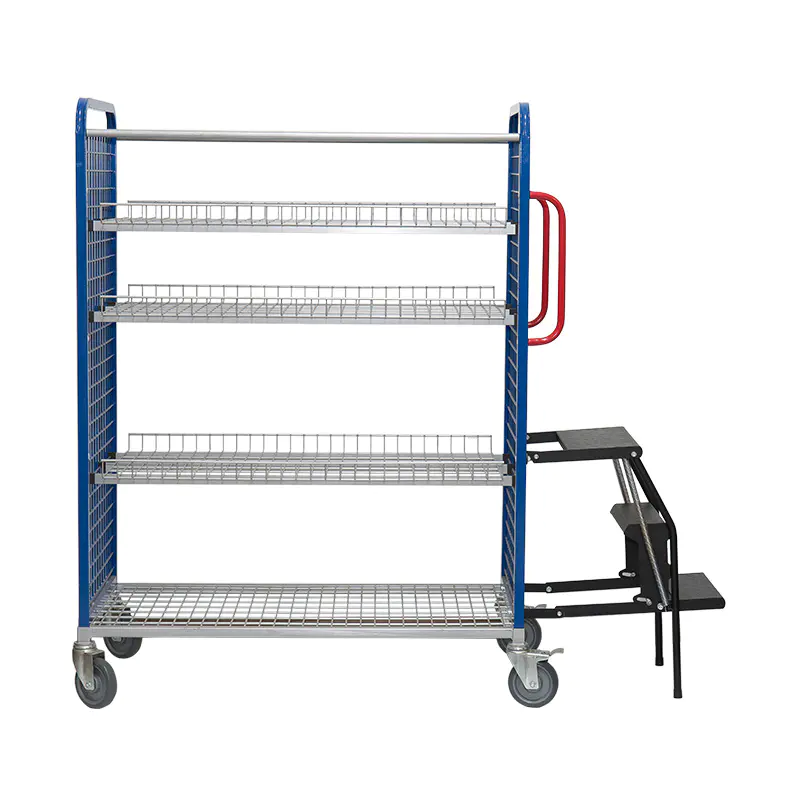
Product specification:This Warehouse wire mesh Multi-Tier Order Picking Trolley adopts a chassis and side panel structur...
See Details -
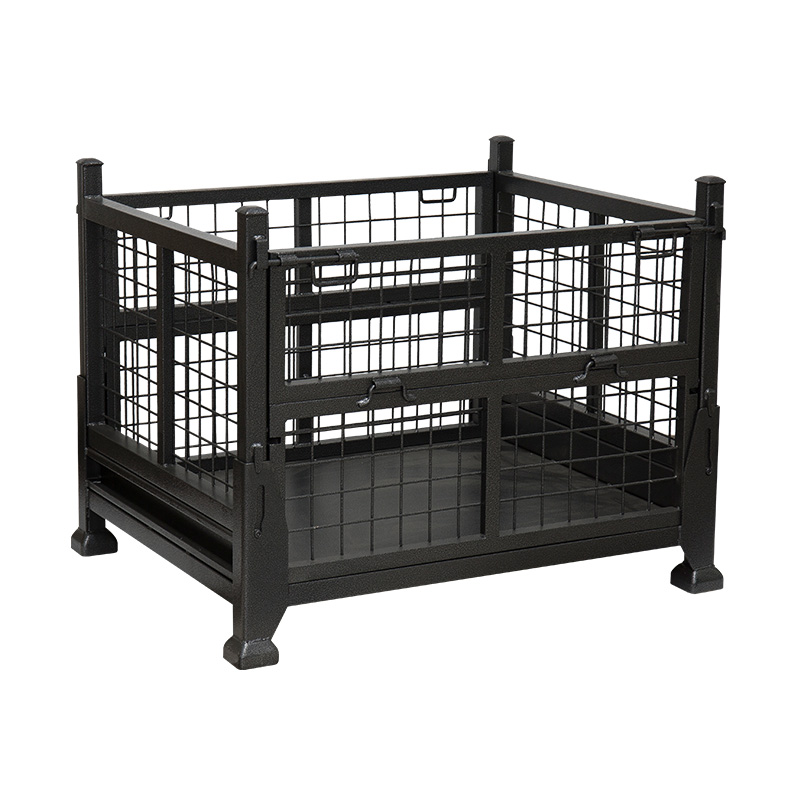
Foldable pallet cages are an important tool in factory logistics. They play an important role in transportation, distrib...
See Details -
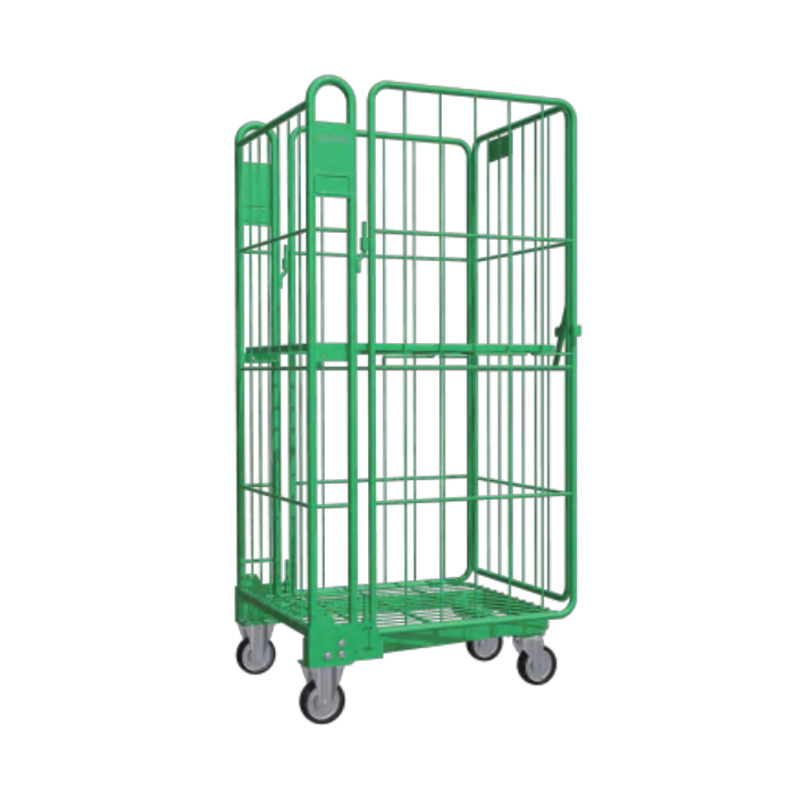
Product specification:The chassis is made of a square tube frame, with a bottom metal sheet tray that can be folded up a...
See Details -
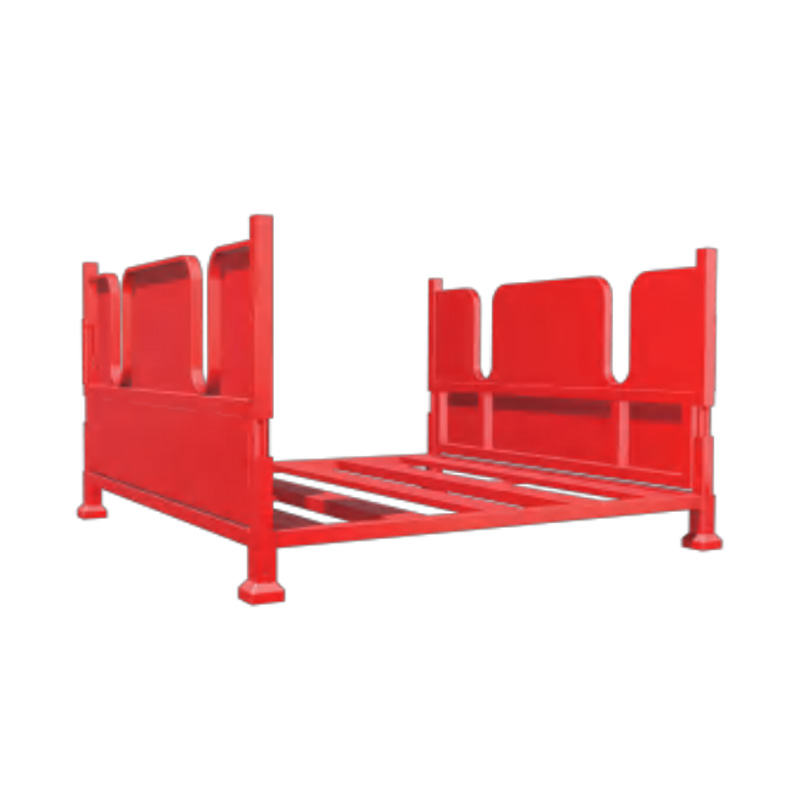
Stacking rack, also known as Qiaogu rack or stacking rackIt is a transportation and storage device derived from pallets ...
See Details -
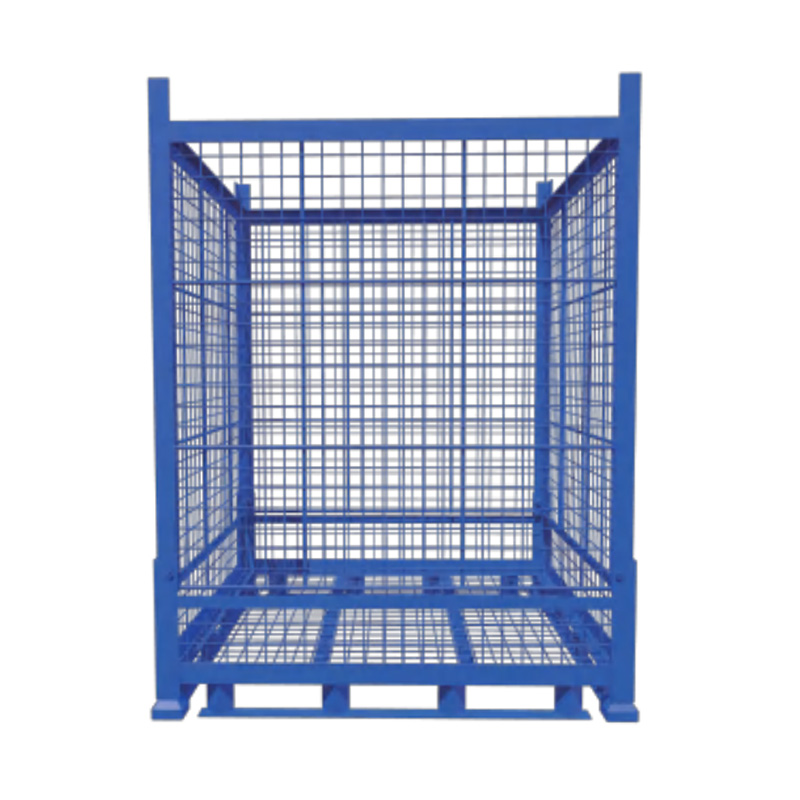
Product specification:Container structure made of L-Type plate frame with 50×50 wire mesh, with base support.Surface tre...
See Details
-
Building B5, No. 138, Weixi Road, Weixi Village, Weitang Town, Xiangcheng District, Suzhou City, China.
-
Tel:
+86-13862140414
+86-13951110334 -
Phone: +86-512-65905480

